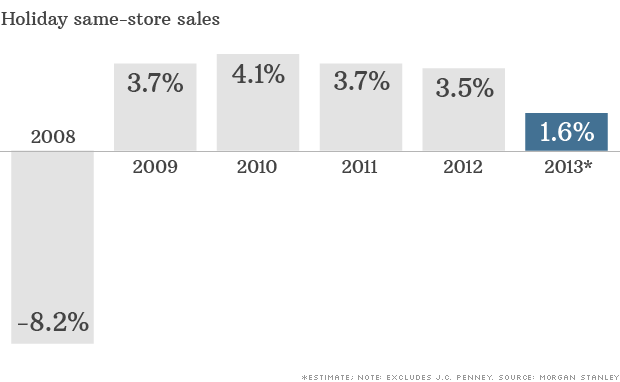The Gold Report: German Finance Minister Wolfgang Schäuble said last month, "The Eurozone is clearly on the mend both structurally and cyclically." How do we square this statement with the record high unemployment, economic contraction and soaring debt of the southern Europe Eurozone members?
Thibaut Lepouttre: We must look at this statement in the light of the German elections in September. Schäuble belongs to the same political party as Angela Merkel, and he was giving us a pep talk to help his chancellor get re-elected. Based on what I see here in Europe, I don't have the impression that things are getting much better, and I think many more structural reforms will be necessary before that happens. The high yield on sovereign debt and the undercapitalized banks have been dealt with on an if-needed basis, without tackling the underlying, chronic problems.
TGR: In Spain, for example, there is 27% unemployment. What kind of political pressure does this put on the Eurozone? Do you think that Spain, Greece and Italy can be kept in the Eurozone?
TL: I don't think the Eurozone will split up because for most of its countries the advantages of staying in the Eurozone outweigh the negatives. If any country were to leave the Eurozone and depreciate its new currency, it would be beneficial in the short term but harmful in the longer term because it would be tougher getting its debt financed on the international markets. And having depreciated once, most investors won't trust it again, fearing further deprecations. Now, because of the single currency, Greece can easily find an investor in, for instance, Germany or Belgium, while it would mainly be limited to domestic investors if it were to get out of the Eurozone.
"I like to see a management team with a track record."
That said, I think the European Union is largely responsible for the crisis in southern Europe. Not only did it allow dubious countries to join, it also supported dubious spending. In a specific area in Spain, there are four parallel roads and two railroads in an area just three kilometers wide. Lots of Spaniards bought second houses or apartments, and thanks to the availability of cheap mortgages, people could actually pay them over 40, 50 or even 70 years. The last example would take three generations to pay off. It is painfully clear now that there was an urgent need for a banking regulator that could have scrutinized the lending of money to people who couldn't afford it.
TGR: Could natural resources help regenerate the European economy?
TL: No question. Italy has oil and gas. Greece has gold. Cyprus has gold, copper and even gas. Spain has gold, copper and silver, and Portugal has tungsten, gold and copper. In Spain, it would make sense to recentralize the mining permitting process because every decision now is made by a local government. This way, mining could be encouraged on a national level and several thousand or even tens of thousands of jobs could be created.
"A company must present to investors and potential investors a clear path and timeline toward production because now all anybody cares about is adding cash flow."
If this recentralization were to occur, it might then be possible for Spain to institute a 5% gross production royalty on gold mining so it would receive gold that's being mined in the country as bullion for its vault. This could strengthen the balance sheets of its national banks. By contributing increased labor and tax flows and increased gold holdings on the balance sheets of the national banks, mining could be a huge boost to Spain and to any other country in southern Europe that would take such measures. To clarify, this potential 5% royalty is my personal thought and not an official law.
TGR: Aren't large-scale environmental protests against mining in Europe a serious problem?
TL: There are always protesters. I agree that every modern mine should be as environmentally friendly as possible, but in the end governments need to balance potential environmental problems against job creation and increased tax revenues.
TGR: You predicted in May that gold would trade between $1,250–1,500/ounce ($1,250–1,500/oz). You have been proven correct. Where does gold go from here?
TL: We've had very strong resistance at $1,410/oz, and when gold tried to break through just a few weeks ago, it dropped right back to the $1,300/oz level. I believe that gold will continue to trade sideways from here: between, let's say, $1,200–1,410/oz. I'm not sure what kind of major economic catalyst could result in a push strong enough to break through this resistance.
TGR: The Federal Reserve has backed off from tapering quantitative easing (QE). Will this raise the price of gold over the long term?
TL: We've seen QE over the past three years, including the past two years when gold fell in price. The continuous printing of money by the U.S. will definitely be beneficial to the price of gold, but the problem is that this new money will cause inflation only when the velocity of money rises again. In a normal economic cycle, this happens between 24 and 36 months, but now the velocity of money is much lower than normal. I think we'll see inflation rising 48–60 months after the printing started, that is, within two years from now. And that will indeed benefit the price of gold.
TGR: Times are tough, and there's little margin of error for successful investors. What qualities must mining companies demonstrate for investors to favor them?
TL: I like to see a management team with a track record. The era of inexperienced managers is over. Further, a company must present to investors and potential investors a clear path and timeline toward production because now all anybody cares about is adding cash flow. In addition, the project must be financeable. I don't think any company would now be able to find financing for a $2–3 billion low-grade copper project in Chile. Finally, in this downturn, effective transparency is more important than ever because investors always want to know what the company is doing behind the curtain.
TGR: You have spoken in the past of the importance of jurisdiction in resource investment. In this regard, what do you like about Australia?
TL: Australia, like Canada, is a real mining country with many skilled and experienced people who are subject to very clear mining code. The jurisdictional risk is close to zero, as Australia realizes it needs its mining sector to support its entire economy. It's a great place to work. A few years ago, Australia instituted a new levy called the Minerals Resource Rent Tax (MRRT) to garner a larger share of mining profits. There was a huge protest against this tax, and last year, the first year it was implemented, it generated only $200 million ($200M), instead of the expected $3 billion. So I think Australia will abolish this tax within the next few years as the negatives outweigh the benefits.
TGR: Could you name some Australian companies you like?
TL: There are three I like. Iron Ore Holdings Ltd. (IOH:ASX ) is a prospect generator that identifies and advances iron ore projects, then sells or joint ventures them, including with big names like Rio Tinto Plc (RIO:NYSE; RIO:ASX; RIO:LSE; RTPPF:OTCP). It has a joint venture on its Iron Valley project (that should go into production in 2014) whereby Mineral Resources Ltd. (MIN:ASX) pays 100% of the capital expenditures, and Iron Ore Holdings receives a royalty sales, which could bring in about $20–30M per year at current prices. So the company has about $70M in cash and continues to work on two other advanced-stage projects.
TGR: What's your prediction for the price of iron ore?
TL: It's currently trading around $135–140/metric ton ($135-140/mt) of 62% iron content. This will drift down to maybe $110/mt because a lot of new projects are coming on-line and onstream, and even though the Chinese economy is still growing, it's growing at a slower rate. I think we should expect a long-term price of about $100/mt.
TGR: How much does iron ore depend on the Chinese economy?
TL: About 60–70% of Australia's iron ore is being shipped to China.
TGR: Where do you stand on the future of the Chinese economy?
TL: That's a difficult question because we just can't rely on any numbers the Chinese produce. There's not a lot of transparency. Without trying to sound like a conspiracy theorist, it is possible China is trying to hide things from the rest of the world. I do believe its economy is still growing, but I also believe the world will have to accept single-digit growth instead of the 10-12% we've become used to.
TGR: What's your second Australia-listed pick?
TL: Beadell Resources Ltd. (BDR:ASX) is a great operation. It operates the Tucano project in Brazil, a 5 million ounce (5 Moz) gold and iron ore deposit with underground potential. It will produce about 200,000–225,000 oz (200–225 Koz) next year with a steady rate of production of about 150 Koz per year, and this should generate about $90–100M per year in operational cash flow. Beadell will be debt free by the end of next year and will be in a really strong position to acquire new assets and continue to grow.
"Investors need to take a look at companies with cash in the bank, real value in the ground and management that can deliver the goods."
When the company struck its financing deal for the Tucano project, it hedged about 150 Koz of gold at $1,600/oz. In hindsight, that was a great move that enables the sale of gold at $300/oz above the current spot price. Beadell will also start to ship iron ore, starting probably early next year, and this could add another $15–20M to its bottom line.
TGR: What's Beadell's production price for gold?
TL: At this point, the company is mixing ore with a high-grade part of the deposit, and the production costs should be around $450/oz. This should increase toward $650–700/oz when it reaches steady-state output. Long term, I'm looking at a 150 Koz per year output at $700–750/oz.
TGR: And your third Australia-listed pick?
TL: Papillon Resources Inc. (PIR:ASX), which owns the 5.2 Moz Fekola gold project in Mali. The company's recently released prefeasibility study outlines 300 Koz/year gold at an all-in cost of $725/oz. Because the capital expenditure (capex) is only $300M, the payback period will be only 1.5 years. Because the company operates in Mali, there are some political risks. As we know, there was a coup d'état 18 months ago, but things seemed to have quieted down since then. Lately, however, there has been some chatter about the Mali government increasing its taxes on gold and mining.
TGR: What's your assessment of the jurisdictional risk of West Africa in general?
TL: Ghana and Burkina Faso are the most reliable countries because they know their economies are based on gold mining, and they have been making tremendous progress attracting foreign investment in mining. I'd like to highlight two companies in Burkina Faso. The first is True Gold Mining Inc. (TGM:TSX.V), formerly called Riverstone Resources. Its Karma project is amazing. It's already environmentally permitted, and a feasibility study is expected this quarter.
According to its 2012 preliminary economic analysis, Karma could produce between 70–90 Koz gold annually at a cash cost of $525/oz. The capex is only $125M, and this could be reduced to about $100M if True Gold uses contract mining. The company has about $35M in working capital, so financing should not be a problem, and production could begin in the first half of 2016.
TGR: What's the second Burkina Faso company?
TL: Sarama Resources Ltd. (SWA:TSX.V). The company's South Houndé project is earlier stage, but it has about $7M in cash, which is something I really like to see in these uncertain times. The recently released initial resource estimate is 1.5 Moz gold at 1.6 grams/tonne (1.6 g/t). The company has explored only about 20% of its strike length, so there is a lot of potential, in excess of 3 Moz within 2–3 years, in my opinion. And as South Houndé is just 80 kilometers south of Endeavour Mining Corp's. (EDV:TSX; EVR:ASX) Houndé project, I think Sarama could be a possible takeout candidate.
TGR: What high spots do you see in South America?
TL: Columbus Gold Corp. (CGT:TSX.V), which operates in French Guiana. This is an overseas department of France, so the political risk is close to zero. And since my last interview with The Gold Report, Columbus has entered a joint venture with Nord Gold N.V. (NORD:LSE), the subsidiary of Severstal, for its Paul Isnard gold project. Under the agreement, Nord Gold must spend $30M in exploration over three years, plus it has to finish a feasibility study. As a standalone, Columbus could never have done these things. I believe Paul Isnard could ultimately contain in excess of 10 Moz gold.
A second project I like is on the other side of South America: Red Eagle Mining Corp.'s (RD:TSX.V) Santa Rosa gold project in Colombia. The company released a preliminary economic assessment (PEA) in September, and if you look at the underground San Ramon zone, its net present value with an 8% discount rate is $92M. This is a 5.6 multiple over Red Eagle's current market cap of $16.4M. The company has $8.5M in cash, but it will have to make a $4.5M property payment in November. So let's say it has about $4M in unrestricted cash, which it could use to further advance the San Ramon zone and get it environmentally permitted.
TGR: What's your assessment of Colombia's jurisdictional risk?
TL: Much better than five or six years ago. I think Colombia could very well be the next Peru, whereby mining will be encouraged as long as the companies color between the lines and don't do anything they aren't supposed to do.
TGR: Any other companies you would like to talk about in the Americas?
TL: In Mexico, Silver Bull Resources Inc. (SVB:TSX; SVBL:NYSE.MKT) has recently released a positive PEA. The study outlined a production scenario of approximately 5.5 Moz per year at a C1 cash cost of $6.58/oz. This is much lower than I anticipated because the company will be able to recycle the cyanide it uses in its plant, which will obviously lower the cyanide consumption and the total cash cost. If one would compare Silver Bull's Sierra Mojada project with Coeur Mining Inc.'s (CDM:TSX; CDE:NYSE) La Preciosa project, it becomes quite clear that Coeur bought the wrong early-stage Mexican silver project.
The PEA uses a zinc price of $1.15/pound ($1.15/lb) and a silver price of $23.5/oz as a base case scenario, but even at a lower silver price of $20/oz for silver and 0.90/lb for zinc, the Sierra Mojada project yields positive returns and a positive NPV at 8% discount (I think the company's base case of 5% is a bit too low).
TGR: Let's talk about Canada. Do you think that the mining industry in Canada is in decline? There are problems with both provincial and federal permitting, with relations with First Nations people, who are claiming oversight over developments, and with the TSX Venture Exchange. Recently, many British Columbia juniors seem to prefer working in Mexico, rather than in their home province. What do you think?
TL: I believe that Canada is a top mining destination and will continue to be so. Most projects will get permitted, but maybe not with best case scenarios. Mexico is very attractive because of its gold and silver history and its much lower labor costs. But since Mexico has announced plans to increase its mining tax, I do think a lot of companies will return to Canada because this makes Mexico less attractive than before.
TGR: Which companies do you like in Canada?
TL: It's very important to follow the companies that can raise money. For instance, Integra Gold Corp. (ICG:TSX.V) raised $4.4M for exploration at its Lamaque gold project in Quebec.
If investors are looking for a near-term commercial producer, I visited Metanor Resources Inc. (MTO:TSX.V) earlier this year, and although the company has had its fair share of bad luck, it is currently ramping up production at the Bachelor Lake gold mine in Quebec. This is an underground operation, and the company is opening up more and more stopes. But investors should be aware that this isn't really a linear process.
TGR: What grade is it getting?
TL: Between 5 and 7 g/t.
TGR: When will Metanor go into commercial production and what will the production costs be?
TL: At this point, Metanor is still offsetting the gold revenue against the underground development costs. I hope to see declared commercial production in December of this year or early next year. Metanor is aiming for a cash cost of less than $1,000/oz, but proof of the pudding will be in the eating.
TGR: What do you like about tungsten?
TL: Tungsten has some irreplaceable uses and thus scores very high on the list of governmental strategic minerals, about the third highest in the E.U. and U.S. I'm pretty sure that the Department of Defense has a tungsten stockpile. China dominates world production; it has also been the predominant world exporter for decades, but has now started to stockpile tungsten. China has become a net importer. So it has become essential to develop tungsten projects outside China in order to guarantee continued supply to the West.
TGR: Can we expect tungsten prices to increase?
TL: I think so. I'm perfectly comfortable with the current price: $400–410/mt. Most mining companies will make a lot of money at those prices. If China continues its new stance, I believe we will see a price increase.
TGR: Is there a tungsten play you like?
TL: I went to Portugal, a mining-friendly country, in June to visit Blackheath Resources Inc. (BHR:TSX.V). Under its agreement with Avrupa Minerals Ltd. (AVU:TSX.V), Blackheath will have 70% this year and the option to acquire 85% of Covas, one of the highest grade, if not the highest grade, projects in Europe. So, while a competitor, such as Wolf Minerals Ltd. (WLF:ASX), will produce tungsten at an average grade of 0.19%, Covas has an average grade of 0.78%. This translates into a rough value of $310 per tonne of ore. The most recent Covas drill program has hit intercepts up to 1% and even 2% tungsten. Grade is king everywhere, be it in gold or tungsten.
Blackheath has a very good chance to develop its Covas and the Borralha project mainly because of its CEO, Jim Robertson. He was involved with Primary Metals, also a tungsten company operating in Portugal, which was floated at $0.15/share I think five or six years ago and was taken out by a Japanese metals trader at $3.65/share three years later. I trust this management team, and I'm pretty sure it will repeat the same trick.
TGR: Given all of the losses investors have suffered over the last couple of years, what are the factors that should keep them in the market?
TL: It all comes down to having a decent selection procedure. I can tell you that about 25–30% of the mining companies on the TSX Venture Exchange today won't survive this downturn. Investors need to take a look at companies with cash in the bank, real value in the ground and management that can deliver the goods. This is not the time to wish upon a star and hope that the drill bits will deliver something.
TGR: Thibaut, thank you for your time and your insights.
Thibaut Lepouttre is the editor of the Caesars Report, a newsletter and mining portal based in Belgium that covers several junior mining companies with a special focus on precious metals and base metals. Lepouttre has a Bachelor of Law degree and two economics masters degrees that have forged his analytical approach to the mining sector. Considered a number cruncher, Lepouttre focuses on the valuations of companies and is consistently on the lookout for the next undervalued mining company.
Want to read more Gold Report interviews like this? Sign up for our free e-newsletter, and you'll learn when new articles have been published. To see a list of recent interviews with industry analysts and commentators, visit our Streetwise Interviews page.
DISCLOSURE:
1) Kevin Michael Grace conducted this interview for The Gold Report and provides services to The Gold Report as an employee. He or his family own shares of the following companies mentioned in this interview: None.
2) The following companies mentioned in the interview are sponsors of The Gold Report: True Gold Mining Inc., Sarama Resources Ltd., Silver Bull Resources Inc. and Red Eagle Mining Corp. Streetwise Reports does not accept stock in exchange for its services or as sponsorship payment.
3) Thibaut Lepouttre: I or my family own shares of the following companies mentioned in this interview: Blackheath Resources Inc., Columbus Gold Corp., Iron Ore Holdings Inc., Beadell Resources Ltd., True Gold Mining Inc. and Metanor Resources Inc. I personally am or my family is paid by the following companies mentioned in this interview: None. My company has a financial relationship with the following companies mentioned in this interview: Blackheath Resources Inc. I was not paid by Streetwise Reports for participating in this interview. Comments and opinions expressed are my own comments and opinions. I had the opportunity to review the interview for accuracy as of the date of the interview and am responsible for the content of the interview.
4) Interviews are edited for clarity. Streetwise Reports does not make editorial comments or change experts' statements without their consent.
5) The interview does not constitute investment advice. Each reader is encouraged to consult with his or her individual financial professional and any action a reader takes as a result of information presented here is his or her own responsibility. By opening this page, each reader accepts and agrees to Streetwise Reports' terms of use and full legal disclaimer.
6) From time to time, Streetwise Reports LLC and its directors, officers, employees or members of their families, as well as persons interviewed for articles and interviews on the site, may have a long or short position in securities mentioned and may make purchases and/or sales of those securities in the open market or otherwise.

( Companies Mentioned: BDR:ASX, BHR:TSX.V, CGT:TSX.V, ICG:TSX.V, IOH:ASX , MTO:TSX.V, PIR:ASX, RD:TSX.V, SWA:TSX.V, SVB:TSX; SVBL:NYSE.MKT, TGM:TSX.V, )

The following article is from one of our external contributors. It does not represent the opinion of Benzinga and has not been edited.
Posted-In: Commodities Markets
Originally posted here...
Around the Web, We're Loving... Learn to Use Trading Platforms Like Hedge Fund Traders do Rumsfeld: Denial of Benefits to Fallen Soldiers' Families 'Inexcusable' Come See How the Pro's Trade in this Exclusive Webinar Facebook, Baidu Lead Big Caps Beating Shutdown What Should You Know About AMZN? Most Popular UPDATE: SolarCity Confirms Pricing of 3.4M Share Offering at $46.54/Share UPDATE: Credit Suisse Downgrades Teradata Corporation as Reacceleration is Postponed Trouble Brewing Under the Hood For The S&P 500? Intel Jumps After Earnings Beat (INTC) Yahoo Soars After Q3 EPS Earnings Beat (YHOO) Leon Cooperman's Top Stock Picks (QCOM, S) Related Articles () EFI Acquires Metrix Software; Terms Not Disclosed Qualcomm Announces Steve Altman, Vice Chairman, to Retire Harley-Davidson Recalls Certain 2014 Touring Motorcycles AmpliPhi Signs Exclusive License Agreement with University of Leicester to Develop Novel Bacteriophage Therapy Agilent, Seoul National University Hospital Announce Strategic Collaboration on Biomarker Research Benzinga's M&A Chatter for Wednesday October 16, 2013 View the discussion thread. Partner Network #marketfy-ae-block { display: none; border: 2px solid #0a3f75; overflow: hidden; width: 300px; height: 125px; text-align: center; background-color: #45719E; position: relative; z-index: 1; } #marketfy-ae-block a { display: block; width: 300px; height: 125px; position: relative; z-index: 2; color: #ffffff; text-decoration: none; } #marketfy-ae-block-countdown-text { color: #f9fc99; padding: 0px 0 0 0; font-size: 19px; font-weight: bold; line-height: 19px; } #marketfy-ae-block-countdown-text-start { font-size: 12px; } #marketfy-ae-block-countdown { padding: 5px 0 5px 0; font-size: 26px; } #marketfy-ae-block-signup { padding: 5px 47px; } #marketfy-ae-block-signup:hover { background-color: #457a1a; } #marketfy-ae-block #marketfy-ae-block-logo { display: block; padding: 3px 0 0 0; margin: 0; } #marketfy-ae-block-logo { text-indent: -9999px; } #marketfy-ae-block-free { display: block; position: absolute; top: 7px; right: -23px; width: 80px; height: 16px; line-height: 16px; text-align: center; opacity: 1; -webkit-transform: rotate(45deg); -moz-transform: rotate(45deg); -ms-transform: rotate(45deg); transform: rotate(45deg); font-size: 13px; font-weight: normal; color: #333333; background-color: yellow; z-index: 500; text-shadow: 1px 1px #999999; } #marketfy-ae-block-arrow { position: relative; width: 60px; height: 60px; z-index: 10; margin: -80px 0 13px -21px; } #marketfy-ae-block-arrow img { height: 60px; width: auto; } Marketfy's International
Traders & Investors Summit Register for this FREE Event!

Hosted by Marketfy

Get Benzinga's News Delivered Free

 Abercrombie is no longer cool
Abercrombie is no longer cool 
 How do you empty an A380's toilets?
How do you empty an A380's toilets?  Getty Images No one wants to talk about death, illness or divorce. Unfortunately, you may have to raise some unpleasant issues when you speak with family members over the holidays if you want to ensure a successful retirement. Family issues are just about the only thing investors don't plan for, and it could hurt them in retirement, a new Bank of America Merrill Lynch and Age Wave study shows. The study, "Family and Retirement: The Elephant in the Room," conducted in August, surveyed more than 5,400 respondents and asked about family dynamics and long-term financial planning. The survey found that respondents were generous when it came to assisting family members but unrealistic in assessing some of their own needs later in life, especially long-term care. In the survey, half of pre-retirees age 50 and older said they would make major financial sacrifices for family members, and 36 percent said they were willing to endure a less comfortable post-retirement lifestyle to aid family members. Baby boomers, also known as the "sandwich generation," are in a tough spot, with one in five parents seeing their children return home to live with them as they also attempt to care for their own aging parents. Those boomers surveyed said they would not be prepared if an aging parent or older relative needed long-term care. But what about the boomers' own long-term care? The majority don't think they'll need it, with only 37 percent of survey respondents age 50 and older saying they may need long-term care in their lifetime. But according to 2013 U.S. Department of Health and Human Services data, 70 percent of retirees will eventually require it. That's a big problem, according to Matt Curfman, senior vice president of Richmond Brothers, a money management firm. He says his clients in Jackson, Miss., may spend anywhere from $2,000 to $7,000 a month on long-term care. Paying for such care is an even bigger concern when someone is married, as they have to worry about how much will be left for the healthy spouse to live on once the ill spouse passes. One option is long-term care insurance, but Curfman doesn't advise it. "The average rise of health care costs compared with what a long-term care policy offers is not great. There is an average increase of 15 percent a year and even if it's a great policy, there could be an inflation cap of 3 to 5 percent." Curfman suggests that people planning for long-term care also consider trying to use the death benefit in their life insurance policy while they're still living. "Life insurance is becoming more unique. Some policies allow access to the death benefit while alive," Curfman says. If a person can't perform two activities of daily living -- feeding and clothing yourself, for instance -- he or she can talk to a doctor, have the doctor write a note explaining their inability to succeed at those tasks and receive substantial access to the death benefit, Curfman explains. You can also receive an accelerated death benefit if you are terminally ill or have a life-threatening diagnosis such as AIDS, according to the U.S. Department of Health and Human Services. There are also hybrid life insurance policies that allow chronic illness riders, which may be helpful to boomers in their 50s and 60s. Curfman says some financial advisers are beginning to factor long-term care and assistance to family members into clients' financial plans. "I think what's happening is that a lot of advisers only deal with retirement planning through asset allocation, and that's shortsighted to help with those goals but not deal with long-term care issues. It's not so much that advisers are proactive, it's that these issues are being brought to them and now they're reacting." David Tyrie, head of retirement and personal wealth solutions for Bank of America Merrill Lynch, says the study makes it apparent that people are not having real discussions about their financial needs in retirement or how family issues complicate those goals. According to the survey, as much as 70 percent of adult children age 25 and older haven't discussed important financial issues with their parents, such as their parents' retirement, possible illnesses or anything related to aging. The survey also shows that more than half of parents age 50 or older haven't discussed inheritance, a will or where they want to live in retirement with their adult children. "It's very clear people are not talking about this. People are only reactive, doing this after an illness or death of a family member. But there is fear of conflict or what might happen as a result," Tyrie says. If families don't discuss important financial issues, debt could easily spiral out of control. Curfman gave the example of a couple he worked with who did everything right to plan for their retirement -- only they didn't account for the financial help they would need to give their children and parents.
Getty Images No one wants to talk about death, illness or divorce. Unfortunately, you may have to raise some unpleasant issues when you speak with family members over the holidays if you want to ensure a successful retirement. Family issues are just about the only thing investors don't plan for, and it could hurt them in retirement, a new Bank of America Merrill Lynch and Age Wave study shows. The study, "Family and Retirement: The Elephant in the Room," conducted in August, surveyed more than 5,400 respondents and asked about family dynamics and long-term financial planning. The survey found that respondents were generous when it came to assisting family members but unrealistic in assessing some of their own needs later in life, especially long-term care. In the survey, half of pre-retirees age 50 and older said they would make major financial sacrifices for family members, and 36 percent said they were willing to endure a less comfortable post-retirement lifestyle to aid family members. Baby boomers, also known as the "sandwich generation," are in a tough spot, with one in five parents seeing their children return home to live with them as they also attempt to care for their own aging parents. Those boomers surveyed said they would not be prepared if an aging parent or older relative needed long-term care. But what about the boomers' own long-term care? The majority don't think they'll need it, with only 37 percent of survey respondents age 50 and older saying they may need long-term care in their lifetime. But according to 2013 U.S. Department of Health and Human Services data, 70 percent of retirees will eventually require it. That's a big problem, according to Matt Curfman, senior vice president of Richmond Brothers, a money management firm. He says his clients in Jackson, Miss., may spend anywhere from $2,000 to $7,000 a month on long-term care. Paying for such care is an even bigger concern when someone is married, as they have to worry about how much will be left for the healthy spouse to live on once the ill spouse passes. One option is long-term care insurance, but Curfman doesn't advise it. "The average rise of health care costs compared with what a long-term care policy offers is not great. There is an average increase of 15 percent a year and even if it's a great policy, there could be an inflation cap of 3 to 5 percent." Curfman suggests that people planning for long-term care also consider trying to use the death benefit in their life insurance policy while they're still living. "Life insurance is becoming more unique. Some policies allow access to the death benefit while alive," Curfman says. If a person can't perform two activities of daily living -- feeding and clothing yourself, for instance -- he or she can talk to a doctor, have the doctor write a note explaining their inability to succeed at those tasks and receive substantial access to the death benefit, Curfman explains. You can also receive an accelerated death benefit if you are terminally ill or have a life-threatening diagnosis such as AIDS, according to the U.S. Department of Health and Human Services. There are also hybrid life insurance policies that allow chronic illness riders, which may be helpful to boomers in their 50s and 60s. Curfman says some financial advisers are beginning to factor long-term care and assistance to family members into clients' financial plans. "I think what's happening is that a lot of advisers only deal with retirement planning through asset allocation, and that's shortsighted to help with those goals but not deal with long-term care issues. It's not so much that advisers are proactive, it's that these issues are being brought to them and now they're reacting." David Tyrie, head of retirement and personal wealth solutions for Bank of America Merrill Lynch, says the study makes it apparent that people are not having real discussions about their financial needs in retirement or how family issues complicate those goals. According to the survey, as much as 70 percent of adult children age 25 and older haven't discussed important financial issues with their parents, such as their parents' retirement, possible illnesses or anything related to aging. The survey also shows that more than half of parents age 50 or older haven't discussed inheritance, a will or where they want to live in retirement with their adult children. "It's very clear people are not talking about this. People are only reactive, doing this after an illness or death of a family member. But there is fear of conflict or what might happen as a result," Tyrie says. If families don't discuss important financial issues, debt could easily spiral out of control. Curfman gave the example of a couple he worked with who did everything right to plan for their retirement -- only they didn't account for the financial help they would need to give their children and parents.




 Popular Posts: 5 Hidden Dividend Gems to Buy Now4 Best Medical Marijuana Stocks to Buy Now3 Stocks for High Rollers Only Recent Posts: Top 10 Dow Dividend Stocks for November 5 Hidden Dividend Gems to Buy Now Should I Buy SHLD Stock? 3 Pros, 3 Cons View All Posts
Popular Posts: 5 Hidden Dividend Gems to Buy Now4 Best Medical Marijuana Stocks to Buy Now3 Stocks for High Rollers Only Recent Posts: Top 10 Dow Dividend Stocks for November 5 Hidden Dividend Gems to Buy Now Should I Buy SHLD Stock? 3 Pros, 3 Cons View All Posts  As prices go up, yields come down. So as generous as payouts from companies in the Dow may be, the yield on the index has come down hard during this epic run. The dividend yield on the Dow Industrials currently stands at 2.1%; a year ago, it was 2.7%.
As prices go up, yields come down. So as generous as payouts from companies in the Dow may be, the yield on the index has come down hard during this epic run. The dividend yield on the Dow Industrials currently stands at 2.1%; a year ago, it was 2.7%. Dividend Yield: 2.9%
Dividend Yield: 2.9% Dividend Yield: 3%
Dividend Yield: 3% Dividend Yield: 3%
Dividend Yield: 3% Dividend Yield: 3.2%
Dividend Yield: 3.2% Dividend Yield: 3.2%
Dividend Yield: 3.2% Dividend Yield: 3.3%
Dividend Yield: 3.3%
 Dividend Yield: 3.8%
Dividend Yield: 3.8% Dividend Yield: 4.2%
Dividend Yield: 4.2% Dividend Yield: 5.1%
Dividend Yield: 5.1% Hosted by Marketfy
Hosted by Marketfy  Get Benzinga's News Delivered Free
Get Benzinga's News Delivered Free

